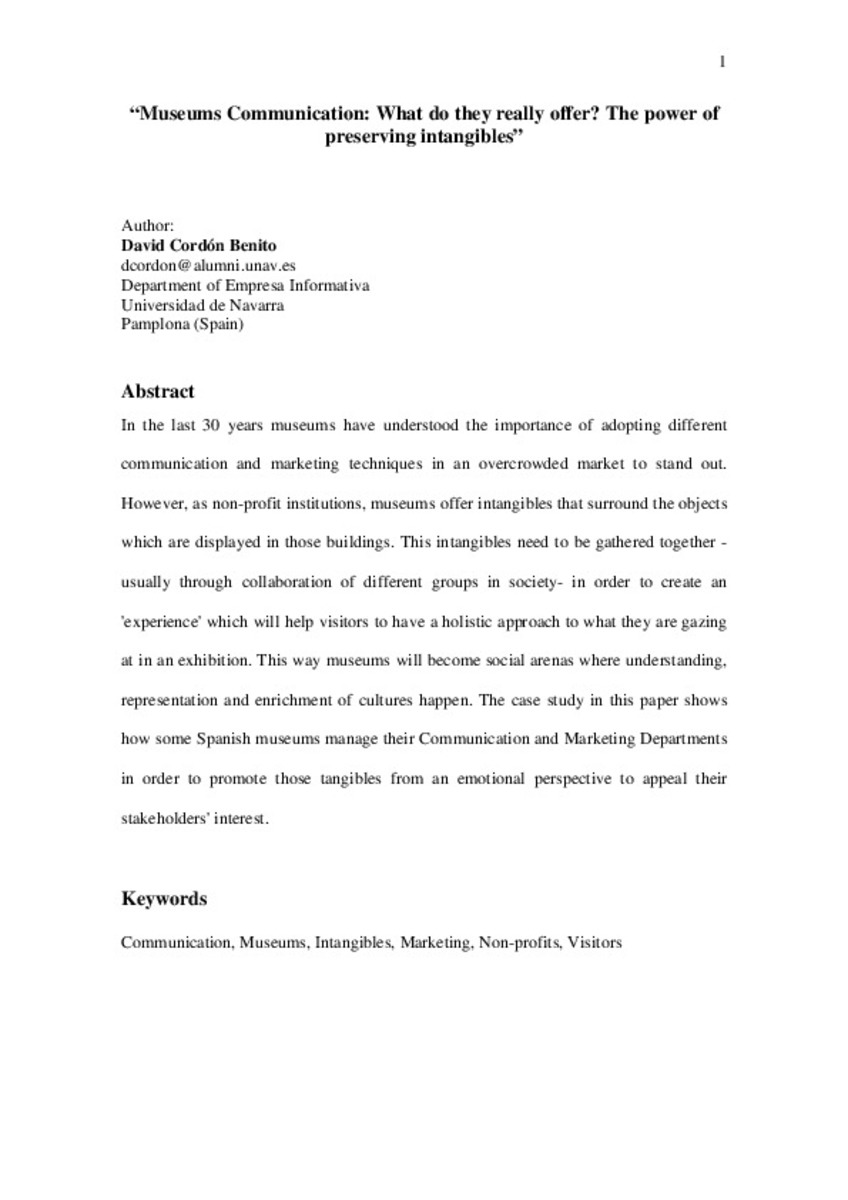Full metadata record
| DC Field | Value | Language |
|---|---|---|
| dc.creator | Cordón, D. (David) | - |
| dc.date.accessioned | 2012-06-06T08:39:31Z | - |
| dc.date.available | 2012-06-06T08:39:31Z | - |
| dc.date.issued | 2012-06-06 | - |
| dc.identifier.other | International Communication Conference, March 22nd 23rd 2012, Pamplona, Spain | - |
| dc.identifier.uri | https://hdl.handle.net/10171/22493 | - |
| dc.description.abstract | In the last 30 years museums have understood the importance of adopting different communication and marketing techniques in an overcrowded market to stand out. However, as non-profit institutions, museums offer intangibles that surround the objects which are displayed in those buildings. This intangibles need to be gathered together -usually through collaboration of different groups in society- in order to create an 'experience' which will help visitors to have a holistic approach to what they are gazing at in an exhibition. This way museums will become social arenas where understanding, representation and enrichment of cultures can happen. The case study in this paper shows how some Spanish museums manage their Communication and Marketing Departments in order to promote those tangibles from an emotional perspective to appeal their stakeholders' interest. | es_ES |
| dc.language.iso | eng | es_ES |
| dc.rights | info:eu-repo/semantics/openAccess | es_ES |
| dc.subject | Relaciones públicas | es_ES |
| dc.subject | Marketing | es_ES |
| dc.subject | Comunicación | es_ES |
| dc.subject | Museos | es_ES |
| dc.title | Museums Communication: What do they really offer? The power of preserving intangibles | es_ES |
| dc.type | info:eu-repo/semantics/workingPaper | es_ES |
| dc.type.driver | info:eu-repo/semantics/workingPaper | es_ES |
Files in This Item:
Statistics and impact
Items in Dadun are protected by copyright, with all rights reserved, unless otherwise indicated.






